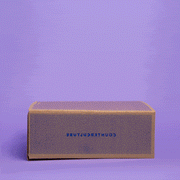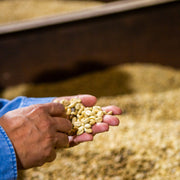We field questions about how to make better coffee at home every day. We could spend hours outlining the variables that go into making delicious coffee, but here are three tips that consistently stand out as the most simple, accessible ways to significantly improve your home coffee game.
You’re reading this, so we’ll assume that you already buy delicious, freshly roasted coffee and have decided what brew method to use. If you need help choosing one, check out our Brew Guides to explore some of our favorites.
These things taken care of, let’s dive into the big three.
1. Purchase A Quality Burr Grinder

Arguably the most critical piece of equipment you can add to your delicious coffee toolbox is a quality burr grinder. Using a burr grinder is important for two big reasons. First, coffee tastes best when brewed immediately after grinding. Second, it is crucial for good extraction to have an adjustable, even grind. Consistent grind particles allow for more-even extraction and, in turn, a more balanced cup of coffee. Producing a truly even grind with a blade grinder is nearly impossible, and making sure it comes out the same way every time is actually impossible.
Think of it this way: when you roast potatoes, you want them to be diced uniformly. That way, all of the pieces cook evenly. If there are large pieces and tiny pieces, the large ones do not cook completely before the tiny ones are overcooked. A similar concept applies to coffee grounds. If the ground coffee is not evenly sized, not enough soluble material is pulled out of the large grounds, and too much material is pulled out of the smaller grounds—creating an uneven brew.
There are many burr grinder options available at different prices, but not all are created equal. If you want a quality electric grinder that will last a long time, we suggest the Baratza Encore for virtually every application except espresso. It’s a great entry-level burr grinder. This is the grinder that most of our staff use at home every day, and its reliability and ease of use are major selling points. If you’re looking for a smaller footprint, travel companion, or a lower price point, check out the Hario Skerton, Porlex, or Comandante hand grinders.
2. Use A Digital Scale

Just as using the proper ratio of ingredients in a cake or cookie recipe is crucial for good results, using a proper coffee-to-water ratio is crucial for making tasty coffee. Many of the best bakers in the world use a scale for consistency. You may make the world’s best cake or cookies, but if you want to do it over and over again the same way, you’re going to need a scale. Similarly, the best baristas use scales to ensure the consistency of their coffee. When making coffee, a proper coffee-to-water ratio allows for consistency and repeatability. We recommend using a ratio of 1:15 - 1:17, depending on your brew method.
This might lead you to wonder— why measure by weight and not with a trusty coffee scoop? Different coffees from around the world have different densities and physical sizes. The roast profile of a coffee affects its weight, as well. This means that one scoop of whole bean coffee of one variety might weigh 5 grams while a scoop of another might weigh 8 grams—even though they look like the same amount of coffee in the scoop! In our example, if your go-to recipe uses 4 scoops of coffee for each pot, that could be either 20 or 32 grams, which is a whopping 60 percent difference! Weighing coffee gives you consistency regardless of variety or roast level and better control over your coffee. Weighing will also help you know exactly how many cups of coffee you’ll get out of a bag.
As with grinders, there are a lot of options for scales. These are three of our favorites:
- The Instagramable Acaia Pearl: It has a built-in timer as well as a smartphone app if you REALLY want to geek out.
- The colorful Hario V60 Drip Scale: This scale is sleek and you can get it in turquoise and pink.
- The compact American Weigh 2KG: An incredible value and gets the job done.
3. Use Clean Water

Water is the unsung hero of coffee brewing. It might be the least considered component of making tasty coffee—which is crazy when you consider that brewed coffee is 98 percent water! With that in mind, it’s easy to see why using clean water is so important. If your water tastes like chlorine or other chemicals, those flavors will make their way into your coffee. If the mineral content of your water is too high or too low, it will affect extraction and possibly cause harm to your brewing equipment. This is especially true of espresso machines, which you can’t see the insides of without taking them apart, but it is also true of other pieces of brewing equipment like kettles.
To avoid overcomplicating things, just be sure that your water tastes good and has decent mineral content. If you use tap water at home, run it through a carbon filter to remove taste and odor. A Brita filter does wonders. While some people argue for using bottled water when making coffee, we recommend filtering your own at home to cut down on single-use plastics. Distilled water should never be used to brew coffee! Its lack of mineral content actually makes it corrosive to your equipment and will dramatically over-extract your brew.
Pay attention to these three things at home, and you’ll be making more-delicious coffee on a consistent basis. If you have any questions, contact us or sign up to take a Counter Culture Coffee class.






